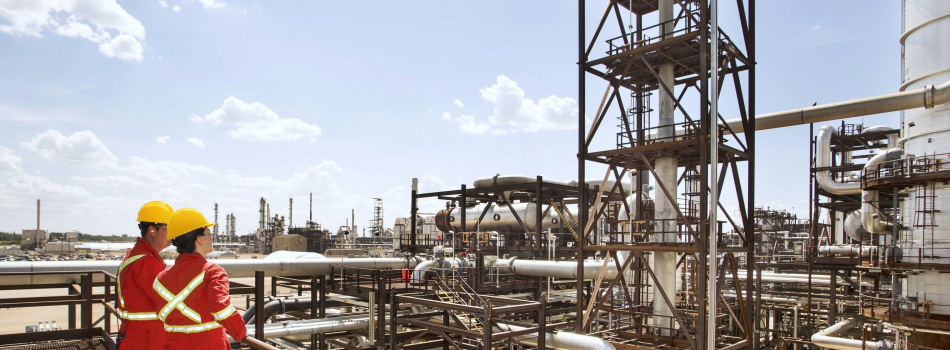The sprawling Shell Scotford Complex near Fort Saskatchewan, Alberta, consists of an upgrader, oil refinery, chemicals plant – and the Quest carbon capture and storage (CCS) facility.
Roughly one third of emissions are captured from the upgrader, a facility that processes crude bitumen from the oil sands into a wide range of synthetic crude oils. These carbon emissions are then transported along a 65-kilometre pipeline and injected several kilometres underground into a saline aquifer well-suited for long-term carbon (C02) storage.
Opened in November 2015, the Quest project was built at a cost of around $1.35 billion. The Alberta and federal governments were strong financial supporters, committing $865 million to help Shell Canada build and operate the facility. While the project was sold to Canadian Natural Resources Ltd. in 2017, Shell Canada continues to run the facility.
In May 2019, Shell Canada announced that the Quest project had successfully captured and stored its first four million tonnes of CO2 – ahead of schedule and at a lower cost than expected. The facility will continue to capture and store one million tonnes of C02 from the Scotford facility annually – the equivalent of removing 250,000 cars from the road.
This Quest project is one of only 18 operational large-scale CCS projects in the world, a technology that has the potential to reduce emissions in a wide range of industries from cement to steel manufacturing. It’s also the first CCS application for Canada's oil sands production.
The ability to rapidly scale up projects like Quest can form an important part of Canada’s emissions reduction approach. Shell Canada estimates that building and operating a similar facility to Quest would now cost 20-30% less, thanks to the insights gained from this project.
Read up on more Ecopreneur stories here, and follow @smartprosperity to join the #CanadasEcopreneurs conversation.



